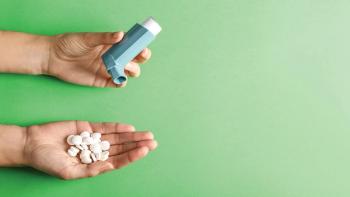
- BioPharm International-01-01-2007
- Volume 20
- Issue 1
IP Briefs: Demystifying the Patent Reform Act and its Impact on Company IP Strategy
The Act will establish third party rights to challenge the validity of a patent through postgrant opposition proceedings.
The proposed Patent Reform Act of 2005 (the "Act")1 is perhaps the most extensive set of legislative reforms to the US patent system since the Patent Act of 1836.2 It stems from reports by the Federal Trade Commission (FTC) and the National Academies of Sciences (NAS), which address a need to improve the efficiency and quality of the system. Recommended changes include simplifying the US patent system, harmonizing it with international standards, and reducing litigation costs.3
David A. Gay, PhD
The Act proposes increasing quality by instituting postgrant oppositions, reducing litigation costs by restricting the use of inequitable conduct as a defense to infringement, eliminating subjective standards, and providing relief from excessive damages. The proposed reforms appear to have bipartisan support. The reforms also have support of the Bar and prominent industry organizations.4 If the reforms are enacted, intellectual property (IP) stakeholders should focus on both patent procurement and enforcement strategies, to maintain harmony between IP assets and company business strategy. The Act includes reforms impacting:
- apportionment of damages infringement
- elimination of best mode
- restrictions to inequitable conduct
- postgrant oppositions
- inter partes reexamination
- first-inventor-to-file and assignee filing system
- narrowing of prior art.
PROVISIONS REDUCING LITIGATION COSTS
Apportionment of Damages
In determining a reasonable royalty for infringement of combination patents, the Act will codify the Doctrine of Apportionment by directing courts to distinguish the "inventive contribution" from other features of the combination.5 A draft submitted by a coalition of US corporations (the "Coalition Text") suggests amending the language to specify that damages relate to contributions arising from the "claimed invention."6 The Coalition Text seeks to avoid an interpretation requiring an element-by-element approach to the calculation of realizable value rather than a calculation based on the proportional value of a patented invention within a larger product.7
The proposed apportionment provision attempts to reduce damage awards and bring greater uniformity by codifying Georgia Pacific's damage factor no. 13.8 Mandatory apportionment of damage calculations will nullify an already limited entire market value rule, which requires the patented feature of a combination to be the "basis for customer demand."9
Codification will necessarily result in limiting damage theories to choose between apportionment and lost profits, and removing any possibility of lucrative awards based on entire market value. It also has the possibility of increasing litigation costs by encouraging broader discovery to include information on all product features. If an element-by-element approach is adopted, this provision may trivialize reasonable royalty damages because the realizable value attributable to less than all of the patented elements may be used in damage calculations.
Limitation to Willful Infringement
Section 6 of the Act will limit the availability of treble damages to where (1) the defendant receives written notice that alleges specific acts sufficient to raise a reasonable apprehension of suit, or the invention is copied, and (2) the defendant did not have a basis for a good faith belief that the patent was invalid, unenforceable, or not infringed. Willfulness could only be pleaded after a finding of infringement.10 In a July 26, 2005, substitute version of the Section 6 (the "Substitute"), willfulness would be an issue tried by the court.11
A higher willfulness threshold will promote certainty as to the timing of liability exposure. The potential infringer will be able to maintain commercial activities without the risk of treble damages until receipt of written notice. This certainty will diminish a company's need for opinion of counsel and also enable liberal competitive intelligence and review of patents without risking exposure to treble damages.
For the patentee, the new willfulness standard will require greater diligence and quicker decision capabilities if it is to implement early written notice. The written requirement also may promote excessive mailings offering patent licenses. Because the notice would be sufficient to trigger a declaratory judgment action, it will require an affirmative decision by the patentee to pursue an infringement claim to ensure preserving a home forum advantage. Litigation will be simplified because theories relating to what constitutes knowledge will be eliminated. However, discovery will be bifurcated. The Substitute also disfavors willfulness theories appealing to a jury because it will be tried to a court.
Elimination of Best Mode
H.R.2795 will eliminate the subjective best mode requirement.12 Prosecution strategy will require a decision on whether disclosing the best mode to ensure coverage of the commercial embodiment outweighs the commercial advantage of maintaining the best mode as a trade secret. Litigation theories likely will be reduced because there will be fewer opportunities to tell a good "state of mind" story having jury appeal.
Inequitable Conduct
The Act attempts to codify the law related to inequitable conduct before Patent and Trademark Office proceedings, making the office the sole forum for resolution and requiring assertions during litigation to be referred to it.13 Inequitable conduct as a defense to infringement would render a patent unenforceable only after a finding of invalidity and where a claim was allowed due to reliance on an intentional misrepresentation by the patentee. Clear and convincing evidence will be required to prove reliance and the intentional misconduct.14
This provision attempts to address concerns that inequitable conduct is improperly overused as a defense to infringement by requiring the conduct to affect validity. It requires fraud on the Patent Office in order to be used as a defense. Although it may deter improper use during litigation, the proposed reform opens the door to other acts of misconduct during ex parte proceedings and likely will not be as strong of a deterrent as the current law.
PROVISIONS IMPROVING PATENT QUALITY
Postgrant Oppositions
The Act will establish third party rights to challenge the validity of a patent through postgrant opposition proceedings.15 In the original bill, both a nine-month period after grant and a six-month period following notice of infringement would be provided to oppose the patent.16 The Substitute would eliminate the second window of opportunity. Invalidity must be proved by a preponderance of the evidence. Limited discovery through cross-examination of affiants or deponents would be allowed. However, the opposer would be estopped from raising any issue of law or fact actually decided in a subsequent proceeding, and opposition proceedings will be stayed where an infringement action has been filed within three months of the patent grant.
The proposed opposition procedures raise a number of issues requiring coordination with potential litigation strategy. The lower burden of proof for establishing invalidity would be attractive compared to the clear and convincing defense standard17 and may encourage aggressive defensive strategies between competitors. However, an opposer should delay filing until three months after grant to avoid triggering an automatic stay and the higher evidentiary standard if an infringement action precipitates. The patent holder will be motivated to file suit within the three-month window to ensure the higher burden for establishing a successful defense and to reduce the possibility of concurrent proceedings.
Because of the estoppel provision, a threshold strategy decision for any opposer will be whether to assert some or all issues of invalidity. The opposer will have the option of holding some issues in abeyance and avoiding estoppel in the event litigation ensues. In weighing this decision, an opposer should consider the likelihood of litigation and of proving invalidity by clear and convincing evidence, and whether the defense has a theory more likely to appeal to a jury than to a panel of patent examiners. The possibility of settlement also should be considered because termination of the proceedings can avoid estoppel.
Inter Partes Reexamination
H.R.2795 proposes conforming the current reexamination estoppel provisions to those proposed for opposition proceedings, eliminating the provision to "could have raised."18 Any reexamination request made during the nine-month opposition period will be treated as an opposition and requests made during pending opposition proceedings will be stayed. Effectively, these revisions will make the opposition the primary avenue for postgrant challenges and remove reexamination as a timely mechanism for narrowing or canceling a competitor's patent claims.
PROVISIONS SIMPLIFYING AND HARMONIZING THE PATENT SYSTEM
First Inventor-to-File and Assignee Filing Systems
The Act will change the patent system from a first-to-invent to a first-inventor-to-file system, limiting interference proceedings to inventorship disputes.19 Although the bill makes clear that a valid patent can only be obtained through an inventor, application filing would be permitted by the assignee.20
The provisions will simplify filing procedures and provide certainty to priority disputes. These will also increase the urgency to secure an early filing date and further raise the existing tension between balancing filing strategy with actual reduction to practice and with providing an enabling disclosure.
Redefinition of Prior Art
The Act will substantially limit the scope of prior art to patents, publications or other information that is publicly known, but would maintain a one year grace period for the inventor's own work.21 Offers for sale or secret use by another would not invalidate a patent. Information would be deemed publicly known if it (1) was reasonably and effectively accessible through its use, sale or other disclosure or (2) is embodied in or inherent in reasonably and effectively accessible subject matter.
The proposed narrowing of applicable prior art by eliminating invalidating secret offers for sale and prior, secret development by another will preclude the defense of prior invention by another, including those inventions maintained as a trade secret. The emphasis on accessibility may become problematic in fields such as software where a large body of prior art is not in patents or printed publications. In formulating IP strategy, a company will need to anticipate litigation surrounding this issue and also what constitutes information embodied in accessible subject matter.
CONCLUSION
IP stakeholders continue to maintain a "wait and see" posture. However, it remains to be seen whether controversial issues such as the apportionment of damages will delay enactment of other provisions in the bill.22 If the reforms are enacted, all stakeholders should be diligent in prioritizing and implementing modifications to portfolio management and strategy that synchronize the scope and protection of IP assets to company business goals.
David A. Gay, PhD, is counsel in the law firm of McDermott Will & Emery LLP, San Diego, CA, 858.643.1411,
REFERENCES
1. H.R.2795. 109th Cong. 2005.
2. 5 Stat. 117.
3. Merrill S, Levin R, Myers M, eds. Federal Trade Commission, To Promote Innovation: The Proper Balance of Competition and Patent Law and Policy (Oct 2003); Committee on Intellectual Property Rights in the Knowledge-Based Economy, National Research Council, A Patent System for the 21st Century. The National Academies Press. Apr 2004.
4. American Bar Association, Section of Intellectual Property Law, A Section White Paper: Agenda for 21st Century Patent Reform (September 16, 2005); Patent Act of 2005: Hearings on H.R. 2795 Before the Subcomm. on Courts, the Internet and Intellectual Property of the House Judiciary Comm., 109th Cong. (2005) (statement of Gary Griswold, Past President of the American Intellectual Property Law Association); Hearings on Patent Law Reform: Patent Injunctions and Damages Before the Subcomm. on Intellectual Property of the Senate Judiciary Comm., 109th Cong. (2005) (statement of J. Jeffrey Hawley, President, Intellectual Property Owners Association); Hearings on An Amendment in the Nature of a Substitute to H.R. 2795, the Patent Reform Act of 2005 Before the Subcomm. on Courts, the Internet and Intellectual Property of the House Judiciary Comm., 109th Cong. (2005) (statement of Robert B. Chess, Executive Chairman, Nektar Therapeutics, Testifying on Behalf of The Biotechnology Industry Organization); Hearings on An Amendment in the Nature of a Substitute to H.R. 2795, the Patent Reform Act of 2005 Before the Subcomm. on Courts, the Internet and Intellectual Property of the House Judiciary Comm., 109th Cong. (2005) (statement of Philip S. Johnson, Chief Patent Counsel, Johnson & Johnson, Testifying on Behalf of The Pharmaceutical Research and Manufacturers of America).
5. H.R. 2795. 109th Cong. § 6 (2005).
6. Coalition for Patent Reform, Modifications to An Amendment in the Nature of a Substitute to H.R. 2795. 109th Cong. Coalition Print 2005.
7. Hearing on An Amendment in the Nature of a Substitute to H.R. 2795, the Patent Reform Act of 2005, supra note 5 (statement of Philip S. Johnson).
8. Georgia-Pacific Corp. v. United States Plywood Corp., 318 F.Supp. 1116, 1120 (S.D.N.Y. 1970).
9. Imonex Services, Inc. v. W. H. Munzprufer Dietmar Trenner GmbH, 408 F.3d 1374 (Fed. Cir. 2005).
10. H.R. 2795. 109th Cong. § 6 (2005).
11. Amendment in the Nature of a Substitute to H.R. 2795, 109th Cong. § 6 (July 26, 2005).
12. H.R. 2795, 109th Cong. § 4 (2005).
13 See id. § 5.
14. Id.
15. See id. § 9.
16. Id.
17. Carella v. Starlight Arcdhery & Pro Line Co., 804 F.2d 135 (Fed. Cir. 1986).
18. See id. § 9.
19. See id. § 8.
20. See id. § 4.
21. See id. § 3.
22. Hearings on An Amendment in the Nature of a Substitute to H.R. 2795, the Patent Reform Act of 2005, supra note 5 (statement of Robert B. Chess); Hearings on An Amendment in the Nature of a Substitute to H.R. 2795, the Patent Reform Act of 2005, supra note 5 (statement of Philip S. Johnson).
Articles in this issue
almost 19 years ago
China Today: Defining the Chinese Biopharmaceutical Marketalmost 19 years ago
Outstourcing Insights Lonza Commits to Life Sciences Sectoralmost 19 years ago
Final Word: Regulatory Evolutionalmost 19 years ago
Regulatory Beat: Multiple Issues Challenge Biotech Industry in 2007almost 19 years ago
From the Editor: Aggregate Knowledgealmost 19 years ago
Street Talk: Biopharm Exchange-Traded Funds: Their Time has Comealmost 19 years ago
Salary Survey: Is Your Paycheck as Robust as Your Proteins?Newsletter
Stay at the forefront of biopharmaceutical innovation—subscribe to BioPharm International for expert insights on drug development, manufacturing, compliance, and more.





